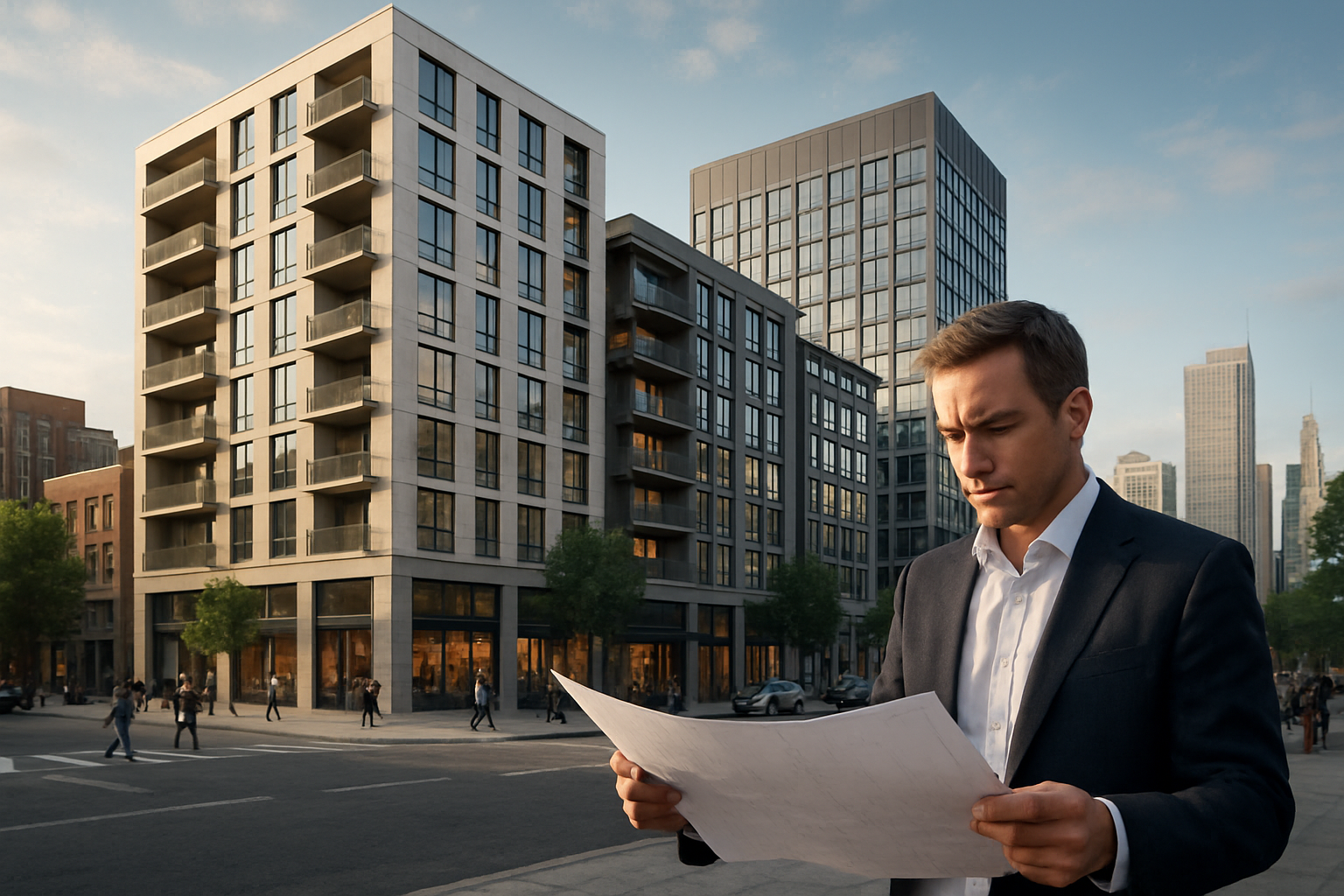Reimagining Urban Rooftops: The Next Frontier in Real Estate
Real estate's newest untapped resource might be right above our heads. As cities grapple with space constraints and sustainability challenges, urban rooftops are emerging as prime real estate for innovative development. This shift is not just about adding square footage; it's reimagining how we utilize urban spaces, create value, and enhance city living. From rooftop farms to sky parks, the potential is vast and largely unexplored.

Historical Context and Recent Developments
The concept of utilizing rooftops is not entirely new. Ancient civilizations in places like Babylon created hanging gardens, effectively using roof spaces for cultivation. In more recent history, rooftop gardens became popular in Europe during the early 20th century as a way to combat urban pollution. However, the current trend goes beyond simple greenery. Today’s rooftop developments encompass a wide range of uses, from residential expansions to commercial ventures and public spaces.
Recent developments have been driven by a combination of factors. Advancements in construction technology have made it easier and more cost-effective to build on existing structures. Additionally, changing urban demographics and a growing emphasis on sustainability have created demand for innovative urban spaces. Cities like New York and Singapore have been at the forefront of this trend, implementing policies that encourage rooftop development.
Current Market Trends and Financial Insights
The market for rooftop development is showing significant growth potential. According to recent industry reports, the global green roof market alone is expected to reach $3.7 billion by 2027, growing at a CAGR of 17.2% from 2020 to 2027. This growth is not limited to green roofs; commercial and residential rooftop developments are also seeing increased interest.
From a financial perspective, rooftop developments can offer attractive returns. For building owners, it’s an opportunity to monetize previously unused space. For developers, it presents a chance to create high-value properties in prime locations without the high costs associated with land acquisition. The premium placed on unique urban spaces, especially those with outdoor access, has made rooftop properties increasingly desirable.
Types of Rooftop Developments
Rooftop developments come in various forms, each offering unique benefits and challenges:
-
Residential Expansions: Adding penthouse apartments or extending existing units to include rooftop spaces.
-
Commercial Spaces: Creating rooftop offices, restaurants, or event venues.
-
Urban Agriculture: Developing rooftop farms and gardens for local food production.
-
Public Spaces: Transforming rooftops into parks, recreation areas, or community spaces.
-
Energy Production: Installing solar panels or wind turbines for sustainable energy generation.
Each of these developments requires careful consideration of structural integrity, zoning laws, and potential impact on existing tenants or neighbors.
Advantages of Rooftop Development
The benefits of rooftop development extend beyond just maximizing space:
-
Increased Property Value: Well-executed rooftop developments can significantly increase a building’s overall value.
-
Energy Efficiency: Green roofs and solar installations can reduce energy costs and improve a building’s environmental performance.
-
Urban Heat Island Mitigation: Rooftop greenery can help reduce the urban heat island effect, improving city-wide climate resilience.
-
Improved Quality of Life: Access to outdoor spaces in dense urban environments can greatly enhance residents’ well-being.
-
Stormwater Management: Green roofs can help manage rainwater runoff, reducing strain on city infrastructure.
Challenges and Considerations
While the potential is significant, rooftop development comes with its own set of challenges:
-
Structural Considerations: Not all buildings are designed to support additional weight or structures on their roofs.
-
Regulatory Hurdles: Zoning laws and building codes may need to be navigated or even changed to allow for certain types of rooftop development.
-
Access and Safety: Ensuring safe access to rooftop spaces, especially in older buildings, can be complex and costly.
-
Weather Exposure: Rooftop spaces are more exposed to the elements, requiring careful design and maintenance.
-
Privacy and Noise Concerns: Rooftop developments may raise issues with neighboring buildings regarding privacy and noise levels.
Impact on Real Estate Market Dynamics
The rise of rooftop development is reshaping urban real estate markets in several ways:
-
Redefining Prime Real Estate: Top floors, once avoided due to walk-up fatigue, are now becoming premium spaces.
-
New Investment Opportunities: Investors can now look at previously overlooked properties for their rooftop potential.
-
Changing Valuation Models: The potential for rooftop development is becoming a factor in property valuations.
-
Shifting Urban Planning: Cities are beginning to incorporate rooftop spaces into their long-term development plans.
Future Outlook and Emerging Trends
As technology advances and urban needs evolve, we can expect to see even more innovative uses of rooftop spaces:
-
Drone Delivery Hubs: Rooftops could serve as landing pads for delivery drones, reshaping urban logistics.
-
Vertical Mobility: Integration with urban air mobility solutions, such as air taxis, could make rooftops key transit points.
-
Climate Resilience Infrastructure: Rooftops may play a crucial role in city-wide efforts to adapt to climate change.
-
Mixed-Use Developments: Combining multiple functions, such as residential, commercial, and public spaces, in single rooftop developments.
A New Dimension in Urban Real Estate
The reimagining of urban rooftops represents a significant shift in how we think about and utilize urban spaces. It’s not just about adding square footage; it’s about creating new value, enhancing sustainability, and improving urban living. As cities continue to grow and evolve, rooftop development will likely play an increasingly important role in shaping the future of urban real estate. For investors, developers, and urban planners, understanding and capitalizing on this trend could be key to success in the evolving urban landscape.





